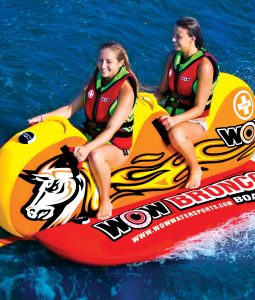
Buoyancy is one of those concepts that even adults have trouble grasping sometimes. Indeed, how does something heavier than the water it’s floating on somehow stay afloat? It’s a perplexing force, to be sure, but not unknowable. If you are staring at your floating tubes, inflatable rafts, or even your pool noodle and wondering how it works here is a short guide and how it applies to the average pool toy.
What Is Buoyancy?
It is a force similar in nature to gravity, acceleration and drag. Except in this case, it moves you upwards. This force requires you to be in water and for that water to have measurable density. Meeting these requirements means that whatever the object in question is, now has the capacity to become buoyant.
The Types
There are three types of buoyancy; positive, negative and neutral.
Positive is the ideal form and the one found in pool toys. This is what it means when something floats in the water with ease. Its force is so great that when in the water it is pushed up, instead of down.
Negative buoyancy is, as the name implies, having no buoyancy whatsoever. It’s a rock that you drop in your pool, which proceeds to drift down to the bottom. It’s an object too dense to float in water.
Neutral is between negative and positive. So, instead of floating or sinking, it floats in exactly the same spot perpetually. You will find this type most commonly in submarines. Anything that has neutral buoyancy can submerge to any level they please.
What Type Are Pool Toys
Obviously, now that we know the three categories, it’s clear that pool toys are positive. Most of them are inflatable and made of rubber, thus hallow. As such, when inflated and dropped into the water, they float with ease. And even when submerged, the air that fills them will naturally lift back up to the surface.
Check out Wow Watersports to learn more.
